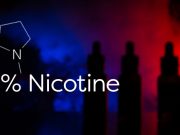The compiled data indicated that combustible tobacco sales dropped by 47% over the three year period, with the 11% of tobacco-only transactions in 2016, dropping to 6% in 2019. The proportion of sales containing a mix of tobacco products and other items also declined, falling from 14% to 9%, resulting in an average weekly sales drop of 16% between 2016 and 2019.
Professor Jamie Pearce from the University’s School of GeoSciences said that these figures indicate the need for a new business model. In fact supporting this argument, data have shown that the sales of e-cigarettes have increased in the same three year period. This link has also been outlined by multiple studies.
In the absence of vapes, former smokers tend to switch back to cigarettes
A recent US study published in the scientific journal Value in Health, found that state-level vaping bans are associated with increases in cigarette sales. Using state-level cigarette sales data, the research team found that when Massachusetts set in place a full vape ban, it witnessed a 7.5% higher-than-expected per capita cigarette sales.
Similarly, local sales data released by Piper Jaffray compared the four weeks ending October 20th 2019, to the four weeks prior to the ban, and then compared the figures to the sales data of the same period last year. The analysis revealed that as predicted, ex-smokers in Massachusetts who had switched to vaping in order to curb their habit, returned to smoking.
The positive effect of the nicotine alternatives’ market
In fact in the UK, as well as New Zealand, vaping products are recommended as smoking cessation tools to smokers who otherwise find it difficult to quit. These recommendations came after UK health authorities put the harm potential of vaping at less than 95% less than smoking, and the risk of developing cancer at 99.5%. And the local smoking rates, with Great Britain at 13.8% and New Zealand at 10.9%, show that this strategy works.
In New Zealand the rate was achieved after the local government launched a vape awareness campaign in 2020. This led to a reduction in smoking rates (from 13.7 to 10.9%) within one year.












